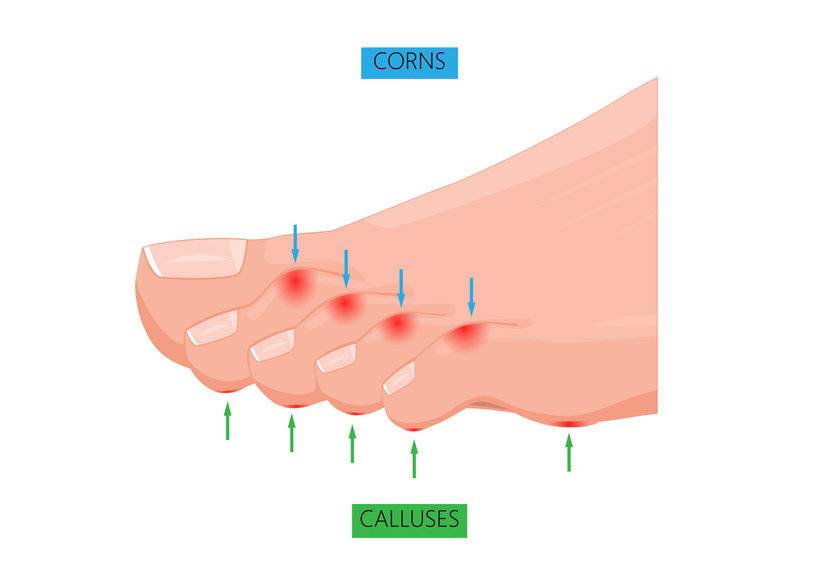What are corns and calluses?
The majority of Americans will have foot problems at some point in their lives, but women are more likely to experiences foot problems than men. Corns and calluses are the most common problems people have on their feet. Corns and calluses are thickened, hardened areas of the skin that form over time after something rubs or presses on the skin (ex. shoes that do not fit well, wearing shoes without socks, or from walking around barefoot). They are typically found on the hands or feet.
Corns usually occur on the bottoms of the feet and sides of the toes. They can be distinguished from calluses because they are often painful and look like a small bump with a hard center surrounded by irritated skin. On the other hand, calluses can form on the hands, fingers, feet, or toes, but usually do not hurt. Calluses often look like thick, rough, and sometimes bumpy skin.
What should you do to get rid of corns and calluses?
If you have corns or calluses, there are some things you can do on your own to help prevent or get rid of them. These include:
- Wear shoes that fit well (not too tight or too loose)
- Always wear socks with your shoes
- Avoid high heels
- Avoid walking around barefoot
- Place shoe pads or inserts into your shoes to help reduce the pressure and prevent rubbing
- Try a daily footbath followed by applying emollient foot cream. This will help your feet hold onto moisture and help keep the skin flexible.
- Keep your feet warm
- Try moderate exercise daily
- If there is dead skin tissue, you can try gently removing it with a callus file or pumice stone
There is only one nonprescription medication that is available to help with the removal of corns and calluses. It is called salicylic acid and is available in different forms including liquid, band aids/plasters, sticks, and other forms. You can find this product over-the-counter made by Dr. Scholl’s, Curad, or other brand or generic names marketed as “Corn & Callus Removers”. If you’re not sure where to find it, ask your pharmacy staff. Stop treatment if you experience any swelling, redness, pain, or irritation.
Also, check out of blog on treating toenail fungus
Foot problems can be a burden for many, but thankfully there are some things you can do to prevent corns and calluses. If you’re not sure what foot problems you have, see a doctor.
Resources:
Pharmacytoday.org
UpToDate












